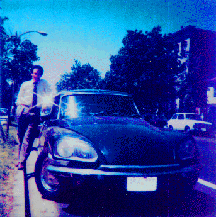Whose Goal Is It, Anyway?
A new frame for interaction design
Abstract for talk by Paul Pangaro at BayCHI
7:30 PM on Tuesday, 14 March 2000, at Xerox PARC
Presentation slides available here
Users are human and humans are goal-directed systems. Easy to say, but definitions of users and goals are hard to find in software design methodologies. Even rarer are user’s individual goals captured by the software itself. Interaction designers now and then talk about user goals, but the relationship of that talk to the designed interface is wispy. Maybe designers get some of their own goals into the software, but they don’t build software that learns much about the goals of the individual user. Whose goal is it, anyway?
When software maintains even a minimal articulation of its user’s goals–for example, you were "looking for a TV", now you’re "researching a new competitor" and next you’re "learning about health issues"–the software can improve its user’s experience and productivity. When goals are delineated, the simple act of clicking on a link or closing an email window can efficiently convey multiple levels of user intention to the software. The distinctions between searching, organizing, storing and recalling evaporate, letting the user focus instead on evolving, simultaneous goals–and on achieving them.
This talk will sketch the reasons for creating goal-directed software interaction (not just goal-directed interaction design). It will define "user" and "goal" prescriptively, and offer examples from search, email and browser interfaces to reveal the benefits of framing user interactions with user goals in the interface.
Biography
Paul Pangaro subscribes to a set of hypotheses about himself as a typical user, and has often wondered why commercial software never interacts with him as an individual. In his work with software startups, he finds the greatest disconnects consistently appear in understanding and adapting to the needs of the user, collectively as well as individually. By extension, he believes there must be something highly beneficial missing from commercial software and he is putting together a software startup to remedy this problem.
Pangaro’s career started with a BSci degree and research staff positions at MIT (including in Negroponte’s research group before it was called the Media Lab). When the Apple computer appeared in 1976, he observed that, despite all the hype, there was no such thing as personal computers, only impersonal ones (which, alas, is still true today). He fled academic research for real-world problems in the context of a software company that he founded in 1981. Under US and UK government contracts, he and his team developed hypermedia information browsers in the mid-1980s that responded to every mouseclick based on the user’s personal knowledge and focus. While moving this technology toward commercial applications, he extended the company’s perspective to strategy engagements with Nynex, Du Pont, Xerox, and Lotus Development Corporation. In a long-term collaborative relationship with a research fellow at Du Pont, Pangaro and colleagues demonstrated the requirements for technology to mediate the creation of wholly new products and services, in an approach called "Conversations for Design/Design for Conversations", defining a superset of the relationships and capabilities now called "e-commerce." Recently, Pangaro did two stints as chief technology officer for startups, both with a heavy emphasis on user context and metadata as critical components for revolutionizing the user experience. He is currently president of The Pangaro Group, a consulting firm that provides product and strategy consulting for startups and for established companies developing new products or entering new markets (pangaro-group.com).
|
|
© Copyright Paul Pangaro 2000. All Rights Reserved.
